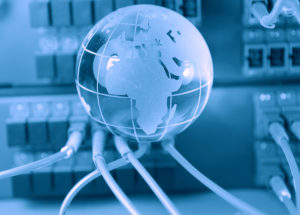Your IT network infrastructure is the backbone of everything your organization strives to achieve. When it works, no one’s aware it’s even there. But when it doesn’t, the business impact can be huge.
And with more users demanding access to new network features, new applications, and new technologies, delivering the network performance your business demands—and the network security you need—can be a tough challenge.
At Apphocus PTE LTD, we help our customers design and deploy network infrastructures with the scalability to meet increasing demands and the resiliency to ensure high availability for mission-critical systems. We help them converge multiple networks to increase efficiency and productivity. And we help them identify and resolve network issues quickly and effectively.


Due to the increasing complexity of your network infrastructure, it is recommended to permanently monitor it for correct operation. Network monitoring may help you with that by notifying you of any malfunctions or problems – provided that you have configured corresponding alerts. There are special systems which can take over safety-related functions. Besides firewalls, these systems actively monitor and secure your data traffic.
In a nutshell, there are many hardware and software options as well as many strategic possibilities. While one solution concentrates the applications on a single hardware platform, this may not be the best choice for other solutions.
The business impact of poor network and data security can be huge—from severe financial losses to irreparable reputational damage. Mitigating security risk is a critical challenge for all IT executives, but in many organizations, network vulnerabilities go unnoticed and security policies are not followed consistently.
And now organizations need to enable employees to work securely from anywhere, using a growing range of mobile devices. Protecting data and services inside your organization’s perimeter is already complex, but providing secure access from any device based anywhere in the world adds further layers of complexity.
We work with our customers to identify vulnerabilities in their security posture, and create policies and systems that minimize their risk exposure while keeping users inside and outside the firewall connected and productive.
